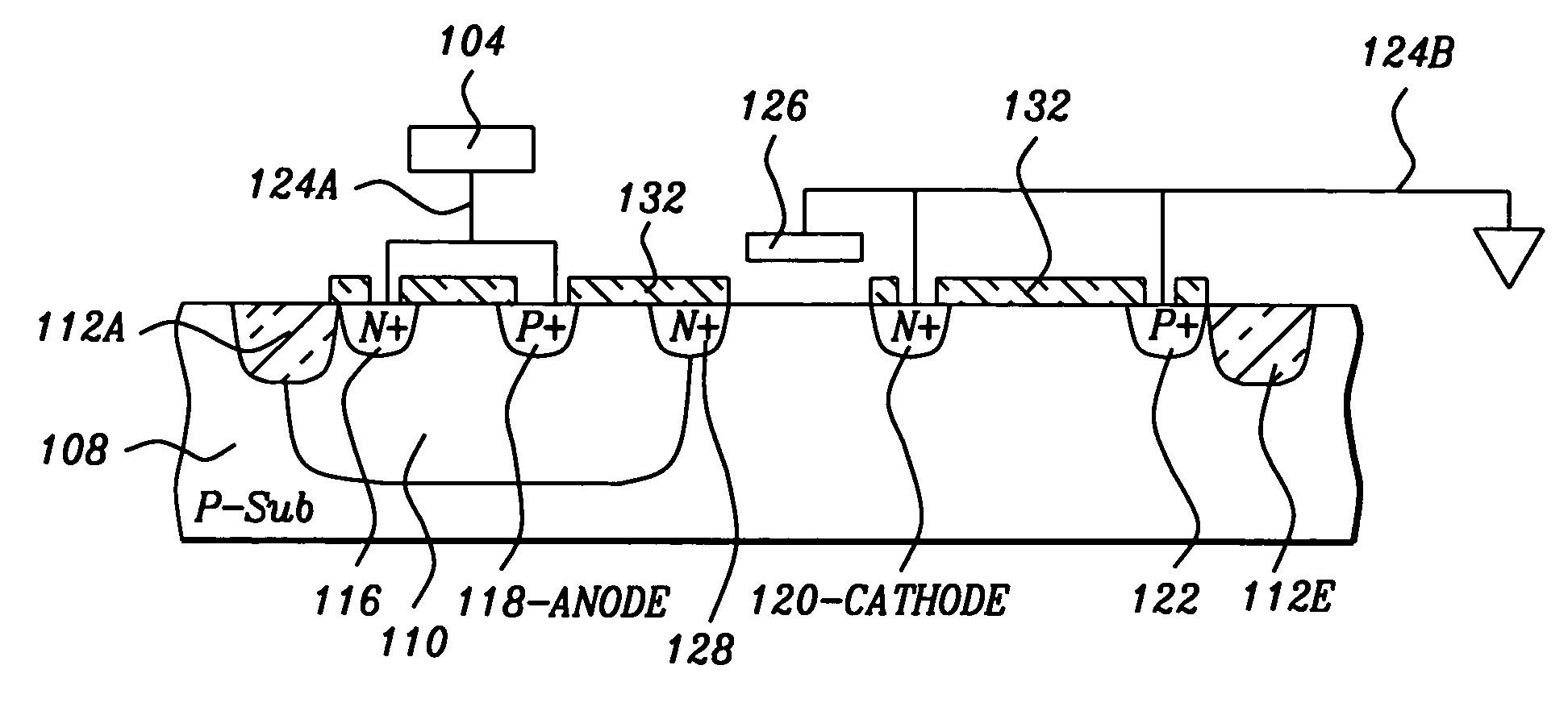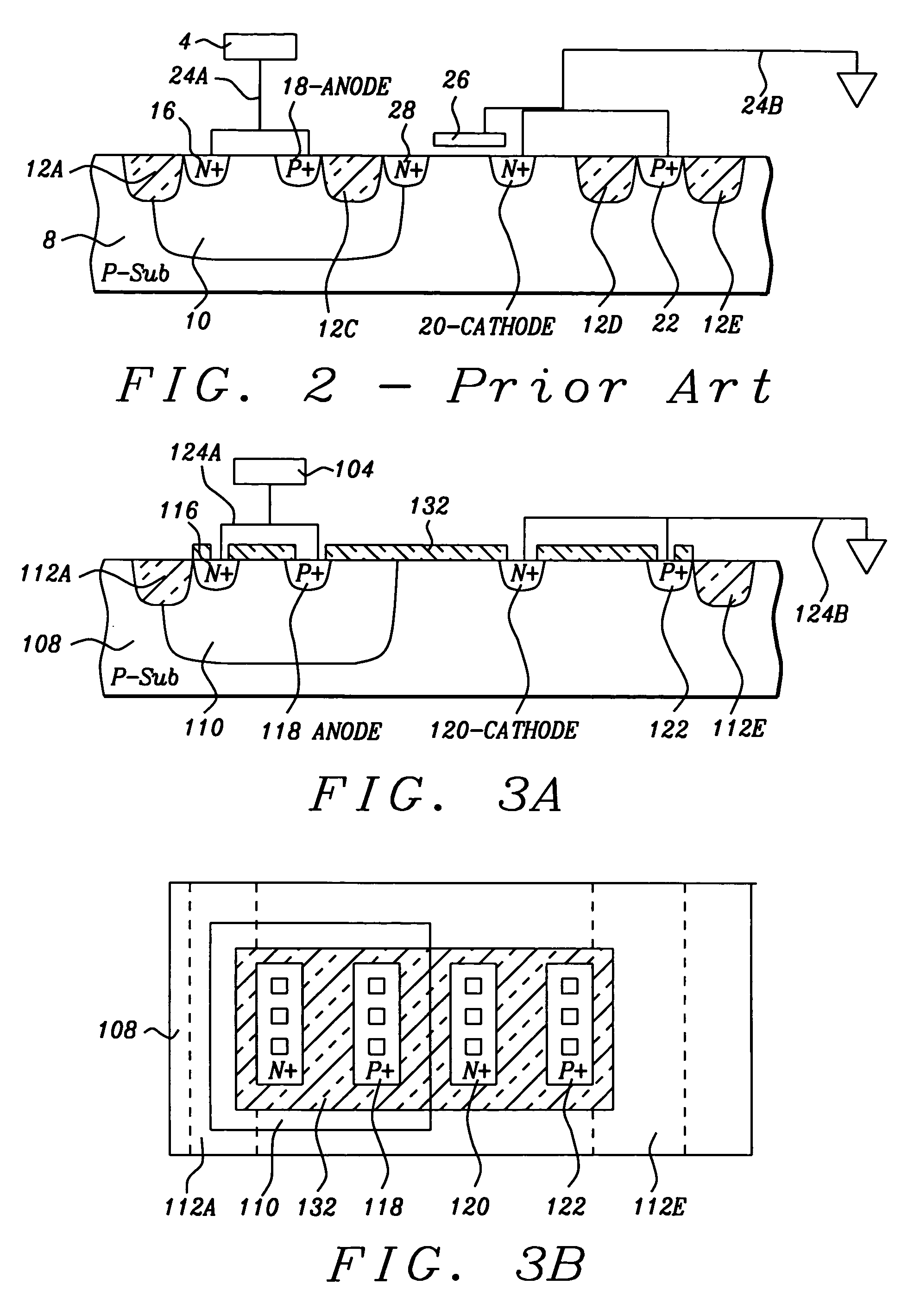SCR-ESD structures with shallow trench isolation
a technology of trench isolation and scr, which is applied in the direction of semiconductor devices, semiconductor/solid-state device details, transistors, etc., can solve the problems of increasing the holding voltage, sti structure limiting effect on the current triggering and capacity of scr esd protection devices, and cataclysmic failures in these same circuits
- Summary
- Abstract
- Description
- Claims
- Application Information
AI Technical Summary
Benefits of technology
Problems solved by technology
Method used
Image
Examples
Embodiment Construction
[0038]FIG. 3A shows a simplified cross section of one embodiment of the invention. A P doped substrate 108 with typical doping concentration of between 1E14 and 1E16 atoms / cm.sup.3 (a / cm.sup.3) contains an N-well 110 with a typical dopant concentration between 1E16 and 1E18 a / cm.sup.3. The N-well 110 is bounded at and near the surface by shallow trench isolation (STI) element 112A, typically between 0.2 to 1 um wide and 0.4 to 2 um deep. The STI element 112A is filled with a dielectric, typically silicon oxide (SiO.sup.2). Within the N-well 110 region are a N+ 116 and P+ 118 contact regions, with typical dopant concentrations of between 1E19 and 1E21 a / cm.sup.3. The N+ region 116 is bounded on the side away from the P+ contact region 118 by the STI 112A. The substrate 110 has N+ contact 120 and P+ contact 122, with a typical dopant concentration of between 1E19 and 1E21 a / cm.sup.3 of donor and receptor dopant respectively. The outside edge of substrate P+ contact 122 is bounded by S...
PUM
 Login to View More
Login to View More Abstract
Description
Claims
Application Information
 Login to View More
Login to View More - R&D
- Intellectual Property
- Life Sciences
- Materials
- Tech Scout
- Unparalleled Data Quality
- Higher Quality Content
- 60% Fewer Hallucinations
Browse by: Latest US Patents, China's latest patents, Technical Efficacy Thesaurus, Application Domain, Technology Topic, Popular Technical Reports.
© 2025 PatSnap. All rights reserved.Legal|Privacy policy|Modern Slavery Act Transparency Statement|Sitemap|About US| Contact US: help@patsnap.com



